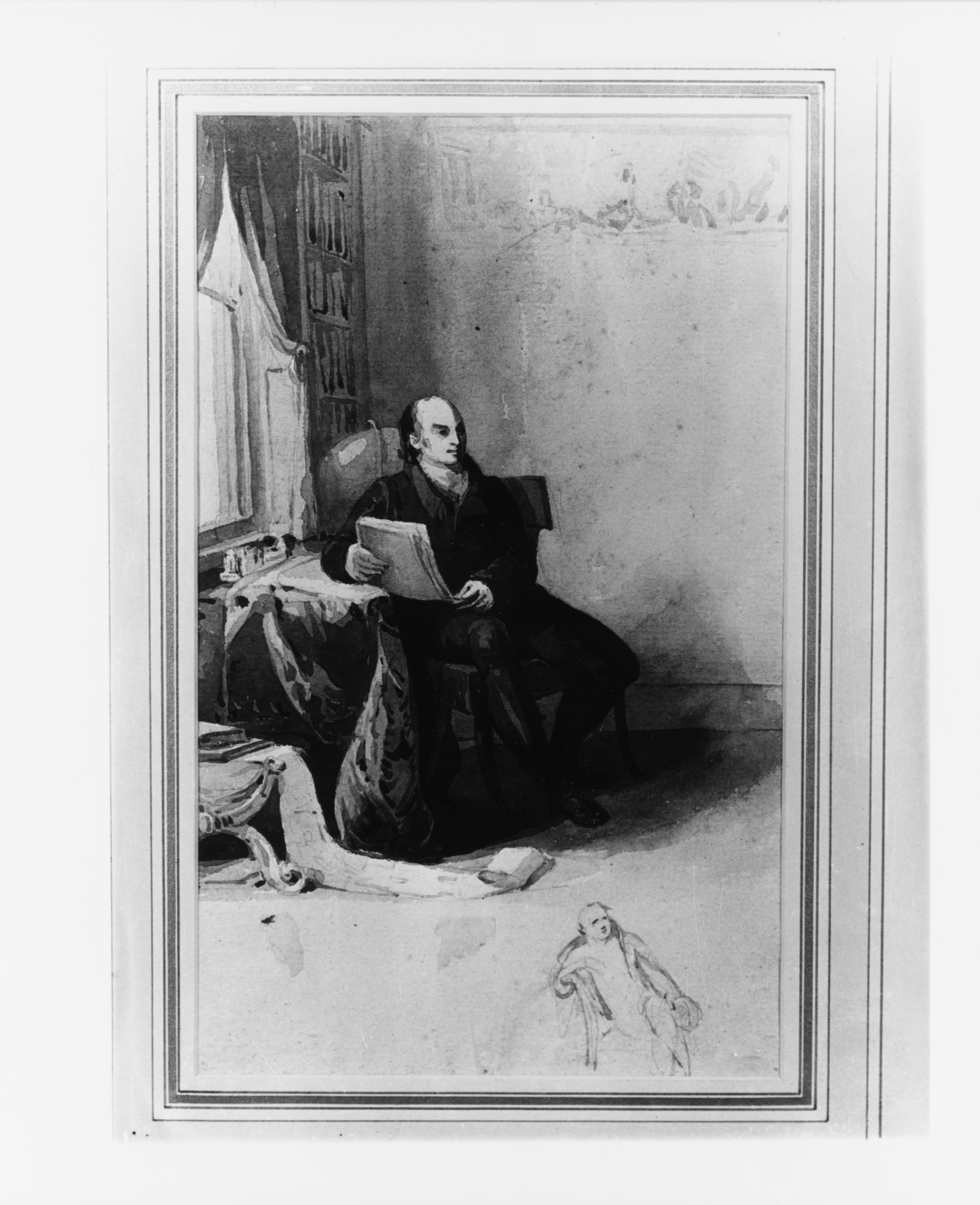John Quincy Adams
Thomas Sully American
Not on view
In his “Hints to Young Painters” (published posthumously in 1873), Sully wrote, with regard to painting a portrait: “The first sitting may be short, as pencil sketches on paper, of different views of the person, will be sufficient to determine the [com]position of the portrait.” In one or possibly two sittings with John Quincy Adams during December 1824, the artist made this watercolor study from life, an oil study (location unknown), and a bust-length portrait (National Gallery of Art, Washington), before painting the final oil picture (Philipse Manor, Yonkers) In the watercolor, Sully worked in layered and transparent washes to record the light source, his sitter’s pose, and the room’s embellishments, while capturing something of the character of both the sitter and his office. The small sketch in the bottom margin of the sheet indicates that Sully contemplated at least one variation in the final pose. Adams had been one of four candidates in the November 1824 presidential election, and Sully arrived in Washington in the interval between the electoral college’s indecisive vote on December 1 and the House of Representatives’ vote in Adams’s favor on February 9, 1825.
Due to rights restrictions, this image cannot be enlarged, viewed at full screen, or downloaded.
This artwork is meant to be viewed from right to left. Scroll left to view more.



